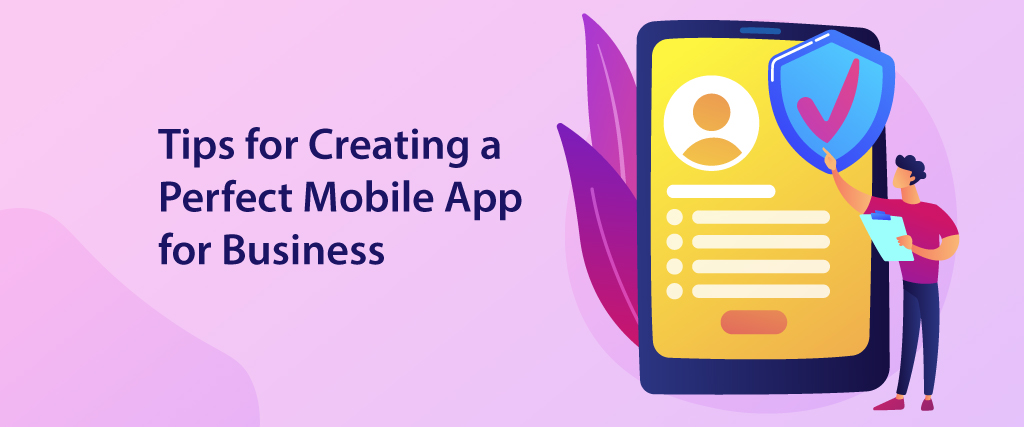Mobile App for Business: The phenomenal rise in smartphone app use has sparked a parallel increase in mobile app growth.
The ease at which you can pull out your phone and complete your immediate mission makes it a very compelling value proposition.
Smartphones are used by 66 percent of the world’s population (the portion of the population that has access to the internet).
If you have a website, the majority of your visitors likely access it through their mobile phones.
If you have a website for doing business with your customers and clients, having a mobile app is a no-brainer.
If you’re a start-up launching a new smartphone application, you’ll need to build one.
As a start-up, your near-term success is determined by how many people you can reach, and having a mobile app is one of the most effective ways to do so.
So, to have the best mobile app, some guidelines need to be followed. Listed below are a few of the best.
Tip 1: Understand Your Audience
First and foremost. To make your app popular, you must first determine who can use it. It will assist you in determining if your project has commercial value (industry need), and also how to engage with your target audience (advertising message) and where to interact (channels).
Mobile App for Business, Look for statistics and patterns, post questions on forums, run a survey, or create an MVP version of your mobile app and gather all feedback.
You may gather all demographic data, such as gender, age, ethnicity, and place, as well as information about your users’ attitudes and motives (pains and gains).
Then talk to someone you respect about your proposal. The larger the group, the greater the potential for the product, but also the greater the chance that something is wrong with it. It’s also easier to tailor innovation to a specific market.
Tip 2: Aim to provide value – Mobile App for Business
A smart app solution addresses a complex challenge that a target audience of future customers recognizes.
Even the most basic type of entertainment, such as the Candy Crush game, offers a tension release and relieves the boredom of commuting or waiting in lines.
The software should have a significant advantage to the customer and encourage him to download and use it.
The price of a service, the speed of data transfer, the way the program runs, or having access to functionality or resources not accessible by other channels are all examples of unique benefits.
An ideal app intelligently blends customer desires, corporate goals, and technical strategies.
A successful product must be either entertaining or functional. In nature, redundancy is beneficial. It’s still preferable if the software addresses several issues. It’s something that the most influential people do.
You will not only make it easy for your customers and partners to do business with you with your smartphone app, but you can also give them timely updates (try not to overcomplicate it) to keep them engaged daily.
Tip 3: Build Strong Feature Flags
Feature flags (also known as feature toggles) allow the app to use (or disable) specific functionality without having to update the app’s core code.
It’s a process that separates feature rollout from new feature updates, giving you complete discretion over the features to enable or disable without affecting the overall app.
Firstly, it modularizes the software development process: a complicated function can be worked on by a select group of the team while the rest of the team works on the main development process.
When the complicated function can be checked or used, it can simply be “toggled” on inside the software.
If it goes well, that’s great; if it doesn’t, just “toggle” it off. This can be achieved even though the app is being used in real-time by the customers.
Secondly, the customers can enjoy the fact that new updates are made available to them without requiring them to go through the normal software update phase.
You can skip the app store to add new features or boost old ones without going to the app store.
Tip 4: Keep it simple – Mobile App for Business
If the app has so many steps before the end goal of using the app can be completed, people can lose concentration or confidence by the time they complete all of the steps.
All of the most common smartphone applications are extremely easy to use. The app’s main function can be accomplished in just a few taps.
Consider the Facebook and Twitter applications. You don’t even have to do something if you want to read your feed. Simply press your app’s icon in the feed that appears in front of you.
And if you want to write anything right away, you can do so. Your mobile app’s user interface should be so easy that everyone would use it without thought.
Tip 5: Build it for multiple platforms
Multiple individuals choose various mobile devices with different operating systems. There are many iOS aficionados.
The Android platform has a sizable user base. Windows phones are increasingly becoming more common.
These are both distinct networks, and you cannot run an interface designed for one on others.
That’s the same explanation why you can’t run Windows applications on macOS or Ubuntu and vice versa.
If you want to attract a larger audience, you’ll need to grow your smartphone app on several platforms.
Which operating system do you think you can prioritize? It all depends on the customer base and when users are most likely to begin using the app right away.
If you have the budget and the team, you can release your smartphone app on various channels, but if you don’t, you must remember the following factors:
- The functionality that a website should provide
- Timeline – one application may take longer than the other Audience – members on one platform may be hesitant to use applications that are accessible on another platform.
- Model of Budget Revenue
Concluding
To be honest, designing a smartphone app is just a small part of the process of making a popular app.
But the smaller it is the more significant it becomes. The most significant proposition every business has today is its on-the-go ability of it. A mobile app serves the same proposition for businesses.
Read More: BUILDING ONE OF THE BEST MOBILE APPS
























